I am trying to develop a model using Keras and transfer learning. The dataset I am using can be found here: https://github.com/faezetta/VMMRdb.
I have taken the 10 classes of car brands with the most samples and trained two models built upon the VGG16 architecture using transfer learning, as it can be seen in the code below.
samples_counts = utils.read_dictionary(utils.TOP10_BRANDS_COUNTS_NAME)
train_dataset = image_dataset_from_directory(
directory=utils.TRAIN_SET_LOCATION,
labels='inferred',
label_mode='categorical',
class_names=list(samples_counts.keys()),
color_mode='rgb',
batch_size=32,
image_size=(56, 56),
shuffle=True,
seed=utils.RANDOM_STATE,
validation_split=0.2,
subset='training',
interpolation='bilinear'
)
validation_dataset = image_dataset_from_directory(
directory=utils.TRAIN_SET_LOCATION,
labels='inferred',
label_mode='categorical',
class_names=list(samples_counts.keys()),
color_mode='rgb',
batch_size=32,
image_size=(56, 56),
shuffle=True,
seed=utils.RANDOM_STATE,
validation_split=0.2,
subset='validation',
interpolation='bilinear'
)
test_dataset = image_dataset_from_directory(
directory=utils.TEST_SET_LOCATION,
labels='inferred',
label_mode='categorical',
class_names=list(samples_counts.keys()),
color_mode='rgb',
batch_size=32,
image_size=(56, 56),
shuffle=True,
seed=utils.RANDOM_STATE,
interpolation='bilinear'
)
image_shape = (utils.RESIZE_HEIGHT, utils.RESIZE_WIDTH, 3)
base_model = apps.VGG16(include_top=False, weights='imagenet', input_shape=image_shape)
base_model.trainable = False
preprocess_input = apps.vgg16.preprocess_input
flatten_layer = layers.Flatten(name='flatten')
specialisation_layer = layers.Dense(1024, activation='relu', name='specialisation_layer')
avg_pooling_layer = layers.GlobalAveragePooling2D(name='pooling_layer')
dropout_layer = layers.Dropout(0.2, name='dropout_layer')
classification_layer = layers.Dense(10, activation='softmax', name='classification_layer')
inputs = tf.keras.Input(shape=(utils.RESIZE_HEIGHT, utils.RESIZE_WIDTH, 3))
x = preprocess_input(inputs)
x = base_model(x, training=False)
# First model
# x = flatten_layer(x)
# x = specialisation_layer(x)
# Second model
x = avg_pooling_layer(x)
x = dropout_layer(x)
outputs = classification_layer(x)
model = tf.keras.Model(inputs, outputs)
model.summary()
steps_per_epoch = len(train_dataset)
validation_steps = len(validation_dataset)
base_learning_rate = 0.0001
optimizer = optimizers.Adam(learning_rate=base_learning_rate)
loss_function = losses.CategoricalCrossentropy()
train_metrics = [metrics.Accuracy(), metrics.AUC(), metrics.Precision(), metrics.Recall()]
model.compile(optimizer=optimizer,
loss=loss_function,
metrics=train_metrics)
initial_results = model.evaluate(validation_dataset,
steps=validation_steps,
return_dict=True)
training_history = model.fit(train_dataset, epochs=10, verbose=0,
validation_data=validation_dataset,
callbacks=[TqdmCallback(verbose=2)],
steps_per_epoch=steps_per_epoch,
validation_steps=validation_steps)
history = training_history.history
final_results = model.evaluate(test_dataset,
return_dict=True,
callbacks=[TqdmCallback(verbose=2)])
I keep getting 0 accuracy and bad metrics in general. I have tried the solutions mentioned in Transfer learning bad accuracy and MNIST and transfer learning with VGG16 in Keras- low validation accuracy, without success.
The summary and the results for the first model are:
Model: "functional_1"
input_2 (InputLayer) [(None, 56, 56, 3)] 0
tf_op_layer_strided_slice (T [(None, 56, 56, 3)] 0
tf_op_layer_BiasAdd (TensorF [(None, 56, 56, 3)] 0
vgg16 (Functional) (None, 1, 1, 512) 14714688
flatten (Flatten) (None, 512) 0
specialisation_layer (Dense) (None, 1024) 525312
classification_layer (Dense) (None, 10) 10250
Total params: 15,250,250
Trainable params: 535,562
Non-trainable params: 14,714,688
Initial results: loss = 9.01, accuracy = 0.0, auc = 0.53, precision = 0.13, recall = 0.12
Final results: loss = 2.5, accuracy = 0.0, auc = 0.71, precision = 0.31, recall = 0.14
The summary and the results for the second model are:
Model: "functional_1"
input_2 (InputLayer) [(None, 56, 56, 3)] 0
tf_op_layer_strided_slice (T [(None, 56, 56, 3)] 0
tf_op_layer_BiasAdd (TensorF [(None, 56, 56, 3)] 0
vgg16 (Functional) (None, 1, 1, 512) 14714688
pooling_layer (GlobalAverage (None, 512) 0
dropout_layer (Dropout) (None, 512) 0
classification_layer (Dense) (None, 10) 5130
Total params: 14,719,818
Trainable params: 5,130
Non-trainable params: 14,714,688
Initial Results: loss = 21.6, accuracy = 0, auc = 0.48, precision = 0.07, recall = 0.07
Final Results: loss = 2.02, accuracy = 0, auc = 0.72, precision = 0.44, recall = 0.009

